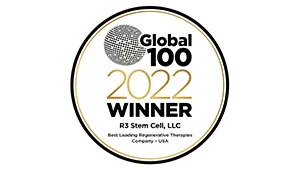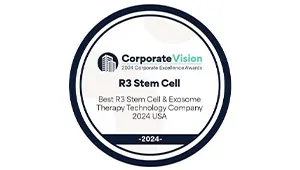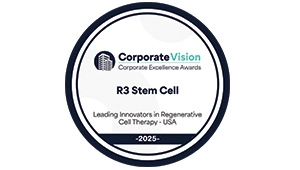It seems as though every day, a new study is published highlighting the benefits of regenerative procedures with amniotic and umbilical cord stem cells. To date, those have been small studies, but larger ones are occurring.
Why Amniotic and Umbilical Cord Stem Cells May Be Beneficial
The stem cells derived from amniotic fluid and umbilical cords have many beneficial qualities that have a variety of uses. Amniotic fluid has been used in wound-healing since the 1930s. Only recently has it become popular in regenerative injection therapy.
High Concentration of Stem Cells
One of the major benefits of the amniotic fluid and umbilical cord, otherwise known as products of conception, is a significant concentration of stem cells present. These amniotic stem cells along with cytokines, growth factors, exokines, secretomes, microRNA and chemokines have been shown to be particularly good at jump-starting the healing process within one’s own body. They are essentially blank slates that can be transformed into different types of cells as needed.
Growth Factors
Products of conception contain a large amount of growth factors, which help to stimulate growth and healing on the cellular level.
Immunologically Privileged
Products of conception are immunologically privileged, which means that there is no chance of rejection when they are processed properly at an FDA regulated facility. When doing organ transplants, physicians have to make sure that the donor organ won’t be rejected by the patient. There is no such worry when dealing with stem cells from products of conception, as the DNA factors are removed during the processing.
Hyaluronic Acid
We all have naturally-occurring hyaluronic acid in our bodies. It is essentially lubrication in our joints that keeps them from rubbing together and causing pain. This is very beneficial for those with joint problems or arthritis.
Antimicrobial
One of the jobs of amniotic fluid is to prevent the fetus from getting infected in the womb. So, it makes sense that there is a very low chance of infection after stem cell injection therapy, due to the antimicrobial properties.
Anti-Inflammatory
The anti-inflammatory properties of products of conception serve to help with pain relief. They are also anti-adhesive, which helps to prevent scarring both on the skin and under it.
Readily Available Following C-Sections
The donation of products of conception not only serves to help those in need, but it also poses no risk to the infant or mother. Donations occur during a scheduled c-section by a consenting adult under the age of 35. Following the donation, very strict FDA guidelines are followed, and many screenings and tests are administered at FDA-certified labs to ensure safety.
No Ethical Concerns
As mentioned above, the donation poses no threat whatsoever to the infant or the mother. Under normal circumstances, the products of conception would simply be discarded after the c-section. Amniotic and umbilical stem cells should not be confused with embryonic stem cells, which are illegal in the U.S.
Easy to Administer
Regenerative stem cell therapy is easily administered. It is an outpatient procedure that is usually done in less than an hour. No hospitalization is required. Once testing and preservation are done at the FDA-certified labs, the stem cells are transferred to R3’s Centers of Excellence and from there are essentially ready to be injected into the afflicted area.
Pain Management and an Alternative to Surgery
As you can see, there are many potential benefits from the use of amniotic and umbilical cord stem cells. The medical industry has been struggling to find pain management techniques that do more than just mask the pain. Stem cell injection therapy may be the answer. Since the properties found in products of conception have the possibility to promote healing, the days of poor pain management may soon be behind us. It should be noted that none of the regenerative biologics are FDA Approved as of yet. We will need much larger studies for that to occur.
If you’re looking for an alternative to surgery, or are just curious about the other benefits of regenerative medicine, contact us today to speak to someone who can answer all your questions.












No Comments